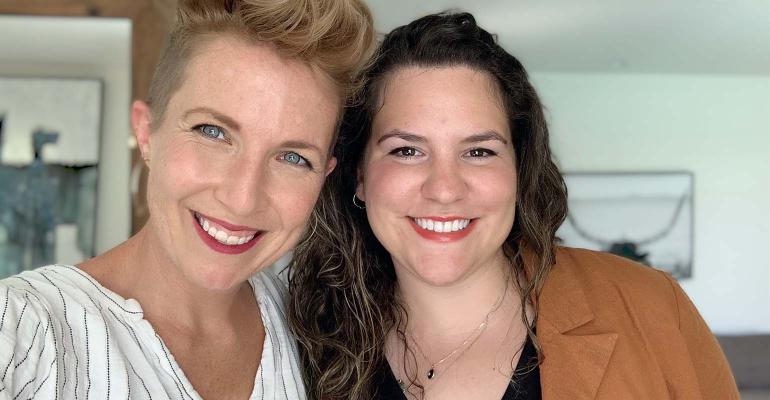Sonya Dreizler, an impact investing consultant and founder of Solutions with Sonya, and Liv Gagnon, founder of public relations and marketing consulting firm Portaga, have teamed up to launch Choir, a diversity tech platform and certification program for financial services conferences. The Choir Certification is the first of its kind for the financial industry, and the two women hope to set the industry standard for conference diversity, with the goal of raising the visibility of women, nonbinary people and people of color onstage at industry events.
“Our core goal is to help lift those voices of women, people of color and non-binary people across the financial industry, which the industry has systemically and historically ignored in many ways,” Gagnon said. “We know just from especially the last year that this is not a pipeline problem. This is really a problem about who we are choosing to listen to as an industry, so that’s really want we’re hoping to do.”
Conference organizers who want to gain the certification work with Choir to assess their most recent event. Choir then uses that data to pull together guidelines and a framework to help organizers meet higher diversity standards year over year.
Choir uses a proprietary assessment to quantify “visibility,” which is not simply a number of women, people of color and non-binary people speaking onstage at the event. They look granularly at each speaking spot and assess visibility based on seven factors, such as stage visibility, the number of concurrent sessions and the number of panelists.
“A keynote speaker is much more visible than a four-person panel while there’s three other panels happening at the same time,” Dreizler said.
They also look at whether a session offers continuing education (CE) credits, as those tend to be more popular among attendees. The length of presentation is another factor; a lot of conferences have “mini sessions,” for instance, which get less visibility.

Screenshots from the HelloChoir.com website
Those factors are then cross-referenced with the race and gender data for each speaker, with an additional metric that accounts for the multiple levels of discrimination that women of color face.
Choir aggregates all that data to come up with a Choir Score, from 1 to 100, which quantifies how well the conference highlights voices of women and people of color in comparison to their representation in the U.S. population. Conferences with a score of 60 or higher will be eligible for the certification and receive a bronze, silver or gold badge to show their commitment to diversity on stage.
All Choir-certified conferences will be posted to the company’s website, www.hellochoir.com.
“They can use the seal in their marketing, and really to do a few things—to help the conference really stand out in an increasingly competitive events space, to help draw more attendees, speakers and sponsors with DEI (diversity, equity and inclusion) values, and also to put an objective third party validation and framework for their DEI initiatives,” Gagnon said.
Conferences are not only paying for the certification, but also Choir’s consulting services, which help identify challenges as well as the opportunities for improvement. Choir will also help conferences connect with more diverse speakers. In the second quarter of 2022, Choir plans to launch a solution to help connect women and people of color in the industry with conferences and the media. Starting this week, women and people of color in the industry can indicate their interest in finding out more information on connecting with conferences and media on Choir’s website.
Choir is also launching the Choir Pledge, a free public statement of commitment and allyship to be signed by sponsors, conference speakers and attendees. The pledge will include four high-level diversity criteria that potential attendees can easily measure by looking through a conference agenda and website. The signatories will be publicly listed on the Choir website.
“What we see across the financial industry is a collective awareness of the lack of representation of women and people of color onstage—yet events still continue to feature predominately white men in high-visibility speaking roles,” Gagnon said in a statement. “It’s time to start putting measurable, transparent benchmarks in action that can help well-intentioned companies measure progress and showcase the important perspectives of women and people of color.”





